Themed collection Best Papers 2021 - Environmental Science: Nano

Graphdiyne: an emerging two-dimensional (2D) carbon material for environmental remediation
This review highlights recent and important advances related to the structure properties and application of graphdiyne (GDY)-based nanocomposites for environmental remediation.

Environ. Sci.: Nano, 2021,8, 1863-1885
https://doi.org/10.1039/D1EN00231G
Removal of antibiotics from aqueous solutions by electrocatalytic degradation
Electrocatalytic degradation of antibiotics.
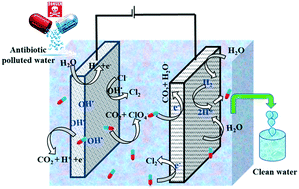
Environ. Sci.: Nano, 2021,8, 1133-1176
https://doi.org/10.1039/D0EN01276A
Critical overview on the green synthesis of carbon quantum dots and their application for cancer therapy
A critical review which delves into the advantages of the use of carbon quantum dots (CQDs) in nano-based cancer therapy, which includes its more positive environmental impact compared to previous systems.

Environ. Sci.: Nano, 2021,8, 848-862
https://doi.org/10.1039/D1EN00017A
Nano-dry-salt deposition on electret nonwoven confers anticoronaviral effect while retaining aerosol filtration performance
Direct deposition of nano-dry-salt on nonwovens was developed as a process that can be incorporated into conventional nonwoven production for timely application of biosafe anticoronaviral surfaces and reliable aerosol filtration performance.
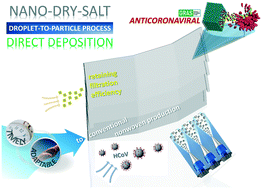
Environ. Sci.: Nano, 2021,8, 2780-2791
https://doi.org/10.1039/D1EN00369K
Emerging investigator series: enhanced peroxidase-like activity and improved antibacterial performance of palladium nanosheets by an alginate-corona
The formation of an alginate corona on the surface of Pd nanosheets can boost their peroxidase-like activity, giving rise to the fast generation of hydroxyl radicals and the enhancement of antibacterial activity.
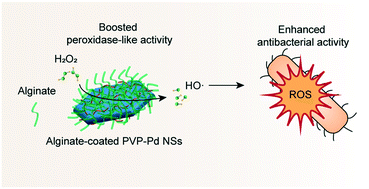
Environ. Sci.: Nano, 2021,8, 3511-3523
https://doi.org/10.1039/D1EN00485A
Nanoelicitors with prolonged retention and sustained release to produce beneficial compounds in wines
We designed nanoparticles able to protect the elicitor on the leaves of grapevines over long periods of time. The foliar application of this nanoelicitor produced wines with high content of stilbenes at significantly reduced dosages.
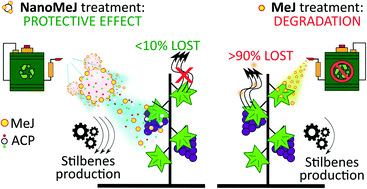
Environ. Sci.: Nano, 2021,8, 3524-3535
https://doi.org/10.1039/D1EN00504A
Assessment of toxicity of metal oxide and hydroxide nanoparticles using the QSAR modeling approach
In the present study, QSAR models were developed to evaluate the cytotoxicity of MeOx NPs towards RAW 264.7 cells and to propose a short mechanism to determine the cause of cellular toxicity by the MeOx NPs.

Environ. Sci.: Nano, 2021,8, 3395-3407
https://doi.org/10.1039/D1EN00733E
A reliable procedure to obtain environmentally relevant nanoplastic proxies
More environmentally relevant nanoplastic models are urgently needed.
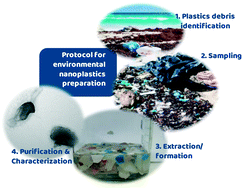
Environ. Sci.: Nano, 2021,8, 3211-3219
https://doi.org/10.1039/D1EN00395J
Boosting eco-friendly hydrogen generation by urea-assisted water electrolysis using spinel M2GeO4 (M = Fe, Co) as an active electrocatalyst
To enhance the efficiency of hydrogen production, bimetallic oxides with spinel structures, M2GeO4 (M = Fe, Co), were synthesized via a facile one-pot hydrothermal method and were used as electrocatalysts for urea-assisted water electrolysis.

Environ. Sci.: Nano, 2021,8, 3110-3121
https://doi.org/10.1039/D1EN00529D
Nano-based soil conditioners eradicate micronutrient deficiency: soil physicochemical properties and plant molecular responses
Nano-enabled agriculture is a vibrant research area; nonetheless, reports on effective nanofertilizers are rather scant.
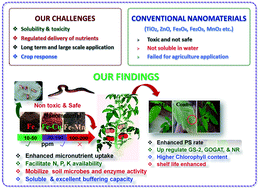
Environ. Sci.: Nano, 2021,8, 2824-2843
https://doi.org/10.1039/D1EN00551K
Bimetallic FexMny catalysts derived from metal organic frameworks for efficient photocatalytic removal of quinolones without oxidant
Bimetallic magnetic FeMn catalysts have been successfully prepared by a facile impregnation method, and they exhibit efficient photocatalytic removal of a series of quinolones without oxidant under simulated light irradiation.

Environ. Sci.: Nano, 2021,8, 2595-2606
https://doi.org/10.1039/D1EN00237F
Lattice-strained nickel hydroxide nanosheets for the boosted diluted CO2 photoreduction
Lattice strain in ultrathin Ni(OH)2 NS promotes CO2 adsorption and activation, facilitates fast charge separation, which improves diluted CO2 photoreduction in 0.05–1.00 atm CO2.
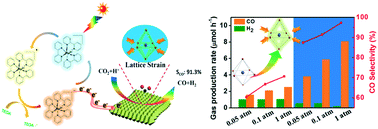
Environ. Sci.: Nano, 2021,8, 2360-2371
https://doi.org/10.1039/D1EN00268F
Unconventional and facile production of a stimuli-responsive multifunctional system for simultaneous drug delivery and environmental remediation
Unconventional multifunctional nanocomposite fiber membranes were primed using Forcespinning® followed by the heat pressure method. The obtained membranes displayed simultaneously controlled drug release and removal of Pb2+ and Cd2+ from wastewater.
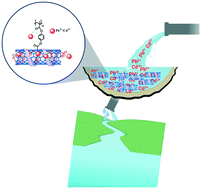
Environ. Sci.: Nano, 2021,8, 2081-2097
https://doi.org/10.1039/D1EN00354B
Reciprocal redox interactions of lithium cobalt oxide nanoparticles with nicotinamide adenine dinucleotide (NADH) and glutathione (GSH): toward a mechanistic understanding of nanoparticle-biological interactions
NADH and GSH reduce Co in LiCoO2 nanoparticles to enhance ion release and the nanoparticles oxidize NADH in model media. This poses two routes of toxicity for high-valent oxides: enhanced release of toxic metals and disruption of cell redox state.

Environ. Sci.: Nano, 2021,8, 1749-1760
https://doi.org/10.1039/D0EN01221A
Non-woven materials for cloth-based face masks inserts: relationship between material properties and sub-micron aerosol filtration
Sub-micron aerosol filtration of non-woven materials and fabric treatments were investigated. Select low-cost, readily available and easily cut non-woven materials were identified as suitable filter inserts for cloth-based masks.

Environ. Sci.: Nano, 2021,8, 1603-1613
https://doi.org/10.1039/D1EN00277E
Environmentally relevant concentrations of titanium dioxide nanoparticles pose negligible risk to marine microbes
Exposure of Prochlorococcus cultures to research-grade and extracted nano-sized TiO2 at environmentally-relevant and supra-environmental concentrations (1 μg L−1 to 100 mg L−1) results in initial cell decline, followed by full population recovery.

Environ. Sci.: Nano, 2021,8, 1236-1255
https://doi.org/10.1039/D0EN00883D
Intracellular trafficking of silver nanoparticles and silver ions determined their specific mitotoxicity to the zebrafish cell line
AgNP toxicity was attributed to dissolved Ag+, which was released, transported, and concentrated in the mitochondria, finally leading to exhaustion of the reserve respiratory capacity and cell death.

Environ. Sci.: Nano, 2021,8, 1364-1375
https://doi.org/10.1039/D1EN00021G
Emerging investigator series: automated single-nanoparticle quantification and classification: a holistic study of particles into and out of wastewater treatment plants in Switzerland
High-throughput single-particle ICP-TOFMS analyses are used to quantify and classify diverse metal nanoparticle types from wastewater treatment plant samples.

Environ. Sci.: Nano, 2021,8, 1211-1225
https://doi.org/10.1039/D0EN01066A
Gold nanoparticles synthesized using melatonin suppress cadmium uptake and alleviate its toxicity in rice
Schematic diagram showing how Mel-AuNPs alleviate Cd-induced toxicity in rice.
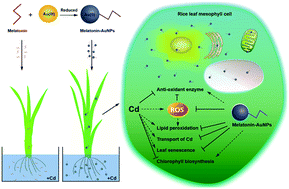
Environ. Sci.: Nano, 2021,8, 1042-1056
https://doi.org/10.1039/D0EN01172J
Piezoelectric activation of peroxymonosulfate by MoS2 nanoflowers for the enhanced degradation of aqueous organic pollutants
MoS2 NFs have exhibited abundant active sites in odd-number layers to piezoelectrically activate PMS for producing ˙OH and SO4˙− in order to degrade organic pollutants.

Environ. Sci.: Nano, 2021,8, 784-794
https://doi.org/10.1039/D0EN01237H
Emerging investigator series: 3D printed graphene-biopolymer aerogels for water contaminant removal: a proof of concept
3D printed fit-for-design graphene-biopolymer aerogel for adsorption and/or filtration of contaminants from water.
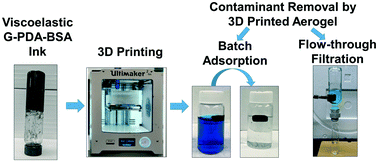
Environ. Sci.: Nano, 2021,8, 399-414
https://doi.org/10.1039/D0EN00953A
Smart nanocomposites of chitosan/alginate nanoparticles loaded with copper oxide as alternative nanofertilizers
A chitosan and sodium alginate complex acts as a biodegradable shell to release nanoscaled nutrients, CuO nanoparticles, as an alternative smart delivery nanofertilizer.

Environ. Sci.: Nano, 2021,8, 174-187
https://doi.org/10.1039/D0EN00797H
About this collection
The Environmental Science Best Papers Initiative identifies a variety of excellent papers published in the Royal Society of Chemistry’s Environmental Science journal family, showcasing great research from across the globe. To celebrate more of the great papers published in Environmental Science: Nano during 2021 which really deserve recognition, we’ve gathered all nominated papers in this special collection.